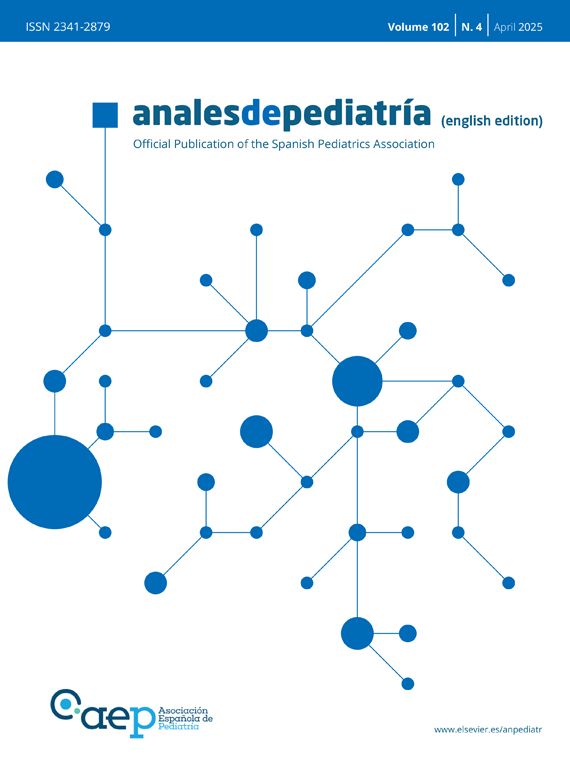We present an infant aged 3 mo who developed a lesion in the fourth finger of the right hand (Figs. 1 and 2) that became apparent on week three post birth. The lesion exhibited progressive growth.
The chosen management was surgical resection with histological examination of the specimen, leading to diagnosis of infantile digital fibromatosis (Fig. 3). A month after surgery, a new indurated tumor was detected under the surgical scar, with features suggestive of recurrence of the previous lesion.
Histological examination of the lesion. (A) Whole slide image (hematoxylin-eosin staining, magnification (×4) showing spindle cell proliferation spanning the full depth of the dermis; (B) Hematoxylin-eosin staining, detail at greater magnification (×40) of the spindle cells forming the lesion; (C) Hematoxylin-eosin staining, detail at ×40 magnification showing eosinophilic cytoplasmic inclusion bodies, which are pathognomonic; (D) Immunohistochemical staining positive for desmin (×4).
Recurrent digital fibromatosis is a rare benign tumor that usually is present at birth or develops in the first two years of life.1 It manifests in the form of nodules in the hands or feet, typically sparing the thumbs and great toes.2 In most cases, the lesions are asymptomatic and measure less than 2 cm.
There is a high rate of recurrence after surgery (of up to 74%), so historically resection with wide margins was the chosen approach to guarantee tumor-free margins and prevent recurrence. However, given the substantial morbidity associated with this approach and the possibility of spontaneous regression, at present, the approach tends to be more conservative, reserving surgery for select cases in which the tumor causes pain or joint mobility changes.2,3










